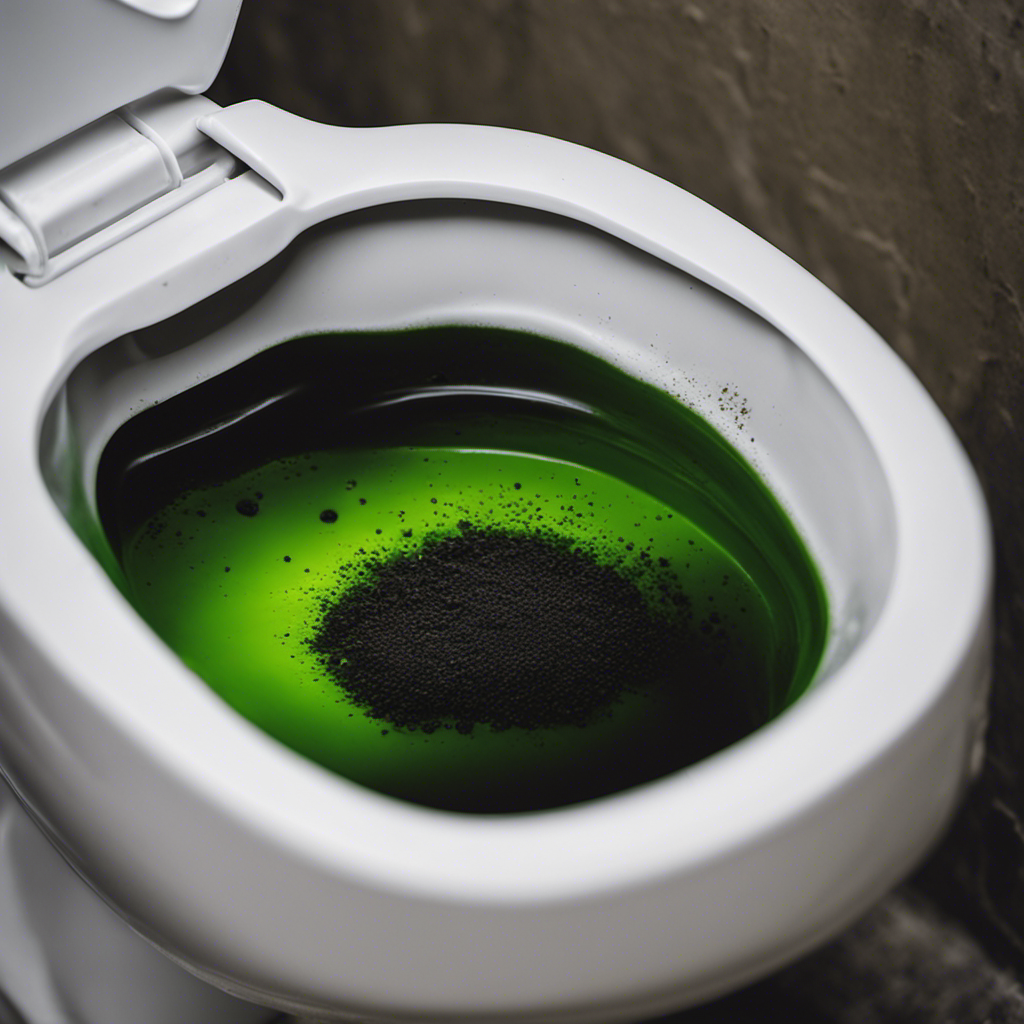We’ve all found ourselves in this scenario before, in front of the toilet, holding a spent Lysol wipe, pondering whether it’s okay to flush it down. Now, let’s explore the realm of plumbing and sewage treatment facilities to reveal the actual facts.
Flushing wipes may seem harmless, but the consequences can be far-reaching. From clogged pipes to damaged septic systems, improper disposal can wreak havoc.
So, join us as we explore the impact and importance of proper wipe disposal.
Key Takeaways
- Flushing Lysol wipes can cause blockages in the plumbing system and expensive repairs may be necessary to fix the damage caused.
- Flushing wipes can lead to clogging and blockages in pipes, resulting in sewage backups and unpleasant odors.
- Flushing wipes can contaminate nearby water sources, introduce microplastics into the water supply, and pose risks to human health and aquatic life.
- Improper disposal of wipes can lead to clogged pipes, increased maintenance costs, and potential equipment damage in wastewater treatment systems, as well as issues with septic systems.
Can Lysol Wipes Be Flushed
Lysol wipes can’t be flushed down the toilet. Flushing them can cause blockages in the plumbing system, leading to costly repairs.
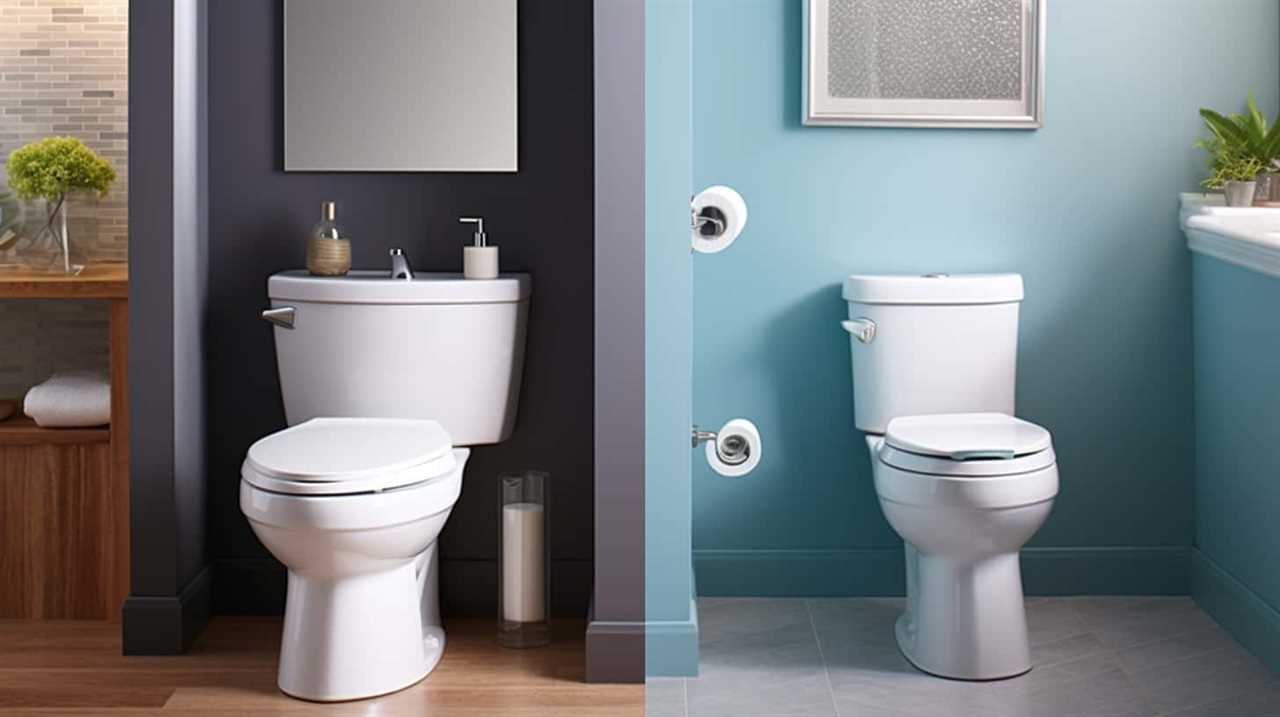
When it comes to disposing of Lysol wipes, it’s important to understand that they aren’t designed to break down in water like toilet paper.
While they can’t be composted due to their synthetic material, they can be discarded in the trash.
It’s important to note that Lysol wipes can’t be recycled either, as they’re made of a combination of synthetic fibers and cleaning chemicals.
Therefore, the best practice is to dispose of them in the appropriate waste bin to avoid any negative impact on the environment and plumbing systems.
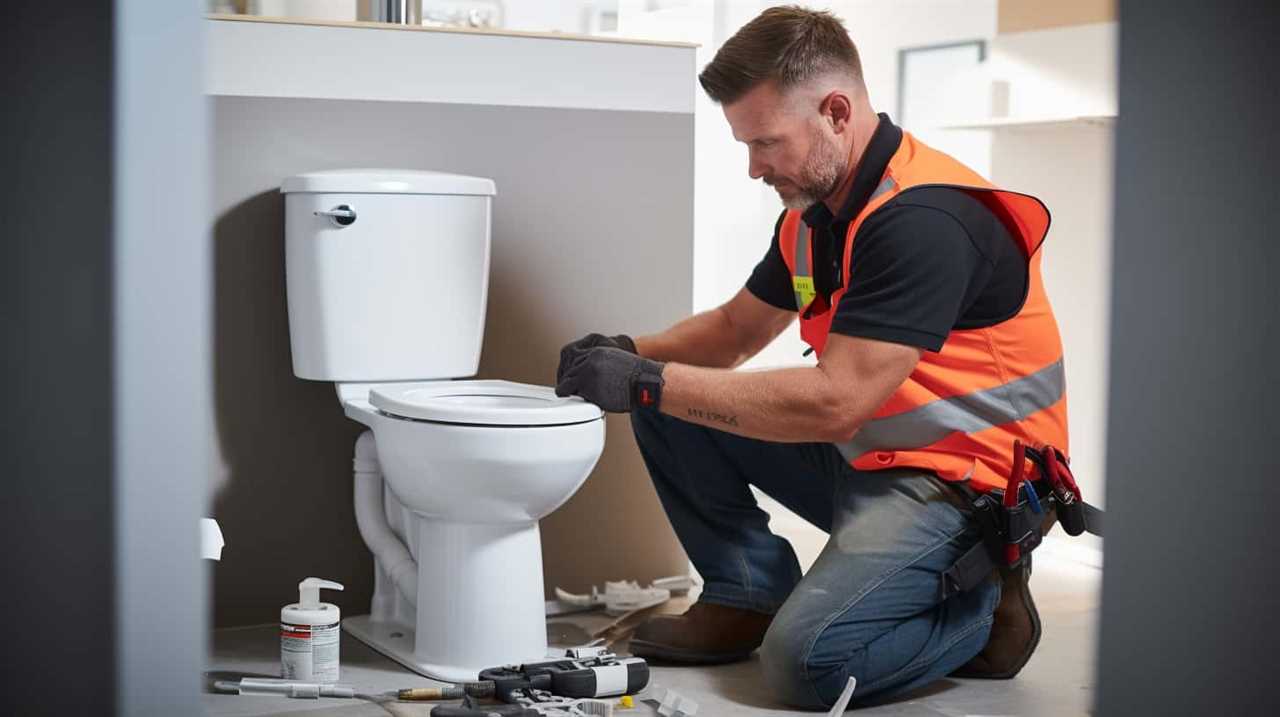
Plumbing Problems Caused by Flushing Wipes
When wipes are flushed down the toilet, they can cause clogged pipes and backups in the plumbing system.
The non-biodegradable materials in the wipes don’t break down easily, leading to blockages and reduced water flow.
As a result, expensive repairs may be necessary to fix the damage caused by flushing wipes, including potential damage to pipes, pumps, and sewage systems.
Clogged Pipes and Backups
Clogging and backups are common consequences of flushing wipes, which can lead to costly plumbing issues. When wipes are flushed down the toilet, they can accumulate in the pipes, causing blockages and hindering the flow of wastewater. Over time, these clogs can become more severe, resulting in complete pipe blockages and sewage backups.
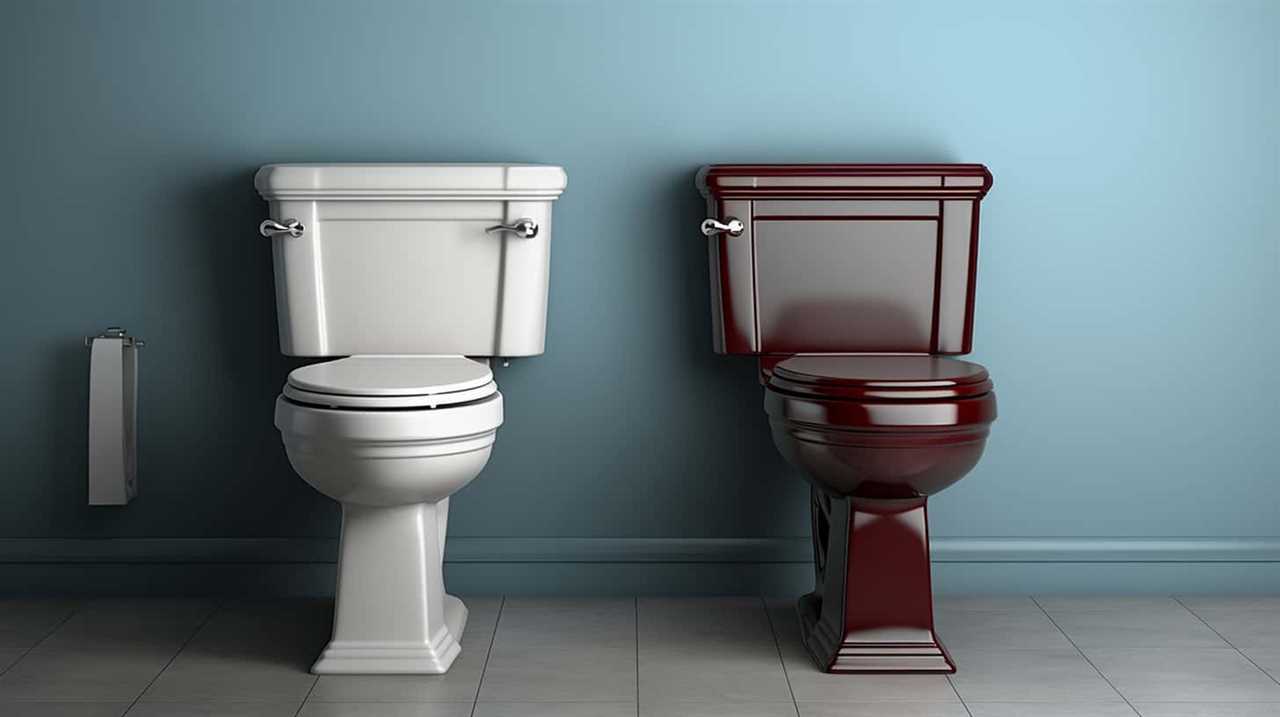
To understand the impact of flushing wipes on plumbing systems, let’s take a look at the table below:
| Plumbing Issues | Description |
|---|---|
| Clogged Drains | Wipes can accumulate in the pipes, obstructing wastewater flow. |
| Sewage Backups | Severe clogs can lead to wastewater backing up into your home. |
Both clogged drains and sewage backups require professional intervention to resolve. Plumbers may need to use specialized tools to remove the blockages and restore proper flow. It’s important to note that the costs of repairing these plumbing issues can quickly add up. Therefore, it’s crucial to avoid flushing wipes to prevent these problems from occurring in the first place.
Expensive Repairs and Damage
Flushing wipes can result in costly repairs and cause extensive damage to plumbing systems. When wipes are flushed down the toilet, they can accumulate and create blockages in the pipes. These blockages can lead to backups and overflows, causing water damage to your home. The cost of repairing the plumbing system can be significant, especially if the damage is severe.
Not only do you have to pay for the repairs, but you may also have to deal with the additional expenses of water damage restoration. Furthermore, the environmental impact of flushing wipes shouldn’t be overlooked. Wipes don’t break down like toilet paper, and they can contribute to clogging in sewer systems and water treatment facilities. This can lead to increased maintenance costs and potential harm to the environment.

Therefore, it’s crucial to avoid flushing wipes to prevent expensive repairs and mitigate the environmental impact.
The Impact on Wastewater Treatment Systems
Using wipes like Lysol in the toilet can have significant consequences for wastewater treatment systems. The improper disposal of wipes can lead to clogged pipes, increased maintenance costs, and potential damage to equipment in the treatment process. But beyond the financial implications, there are also serious public health concerns associated with wastewater contamination. These wipes can contain harmful chemicals and bacteria that can contaminate the water supply, posing a risk to both human and environmental health. To further illustrate the impact of flushing wipes, consider the following table:
| Consequences of Flushing Wipes | |
|---|---|
| Clogged Pipes | Increased Maintenance Costs |
| Equipment Damage | Wastewater Contamination |
| Public Health Concerns | Environmental Risks |
As you can see, flushing wipes not only affects the efficiency of wastewater treatment systems but also has far-reaching consequences for public health and the environment. It is crucial to properly dispose of wipes in designated trash bins to avoid these issues and maintain the integrity of our wastewater treatment systems.
Clogging and Blockages in Pipes
When it comes to clogging and blockages in pipes, flushing Lysol wipes can cause significant damage. These wipes aren’t designed to break down easily in water, leading to the accumulation of debris and buildup in the pipes. As a result, clogs can occur, leading to expensive plumbing repairs and potential backups.
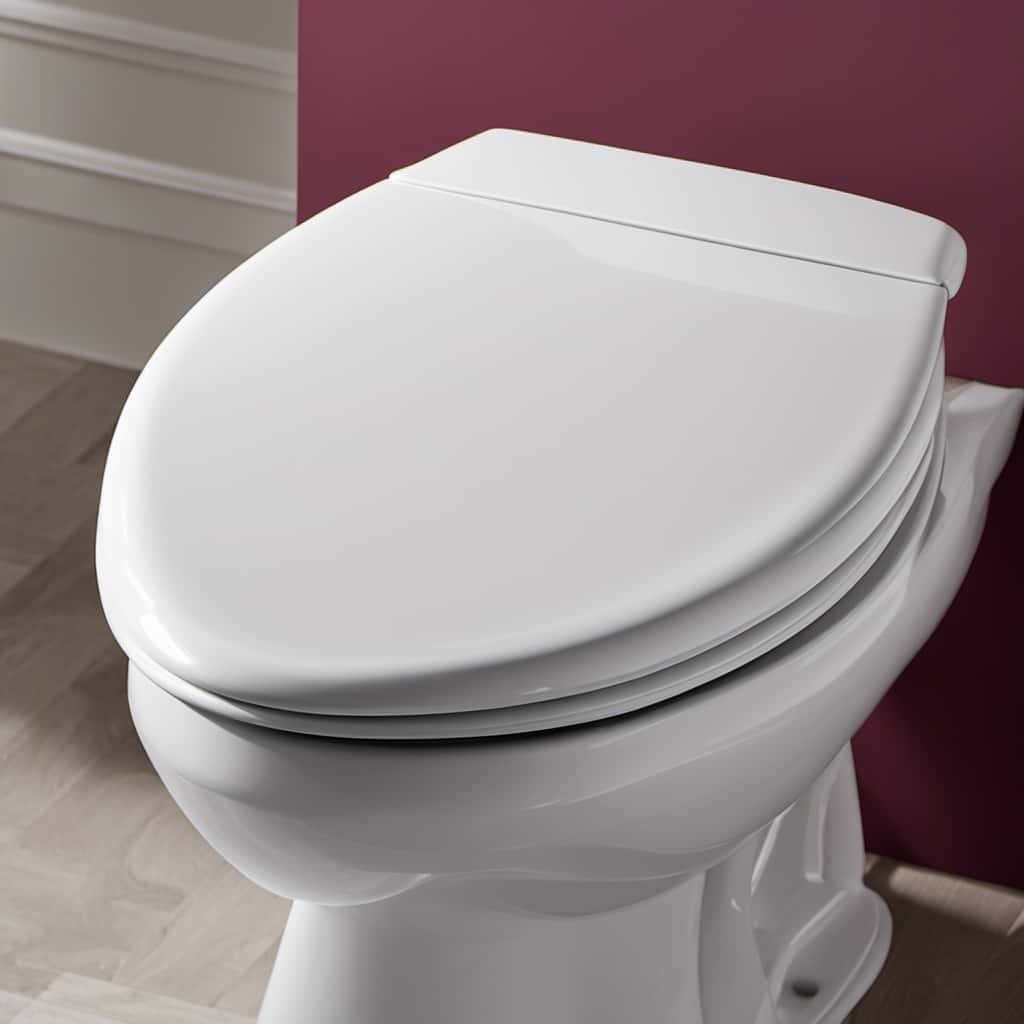
Additionally, the environmental impact of flushing these wipes shouldn’t be overlooked, as they can contribute to pollution and harm aquatic ecosystems.
Pipe Damage From Clogs
To prevent pipe damage from clogs, we should be mindful of what we flush down the toilet. Proper pipe maintenance and water conservation practices are crucial in ensuring the longevity of our plumbing systems.
Clogs occur when foreign objects and debris accumulate within the pipes, obstructing the flow of water. Over time, these blockages can cause pressure buildup, leading to pipe damage. It’s essential to avoid flushing items such as wipes, paper towels, and feminine hygiene products, as they don’t disintegrate easily and can get tangled in the pipes.
Additionally, practicing water conservation by using less water during each flush can help prevent clogs by reducing the amount of waste and debris that enters the pipes. Regular pipe maintenance, including periodic inspections and cleaning, can also help identify and address any potential clogs before they cause significant damage.
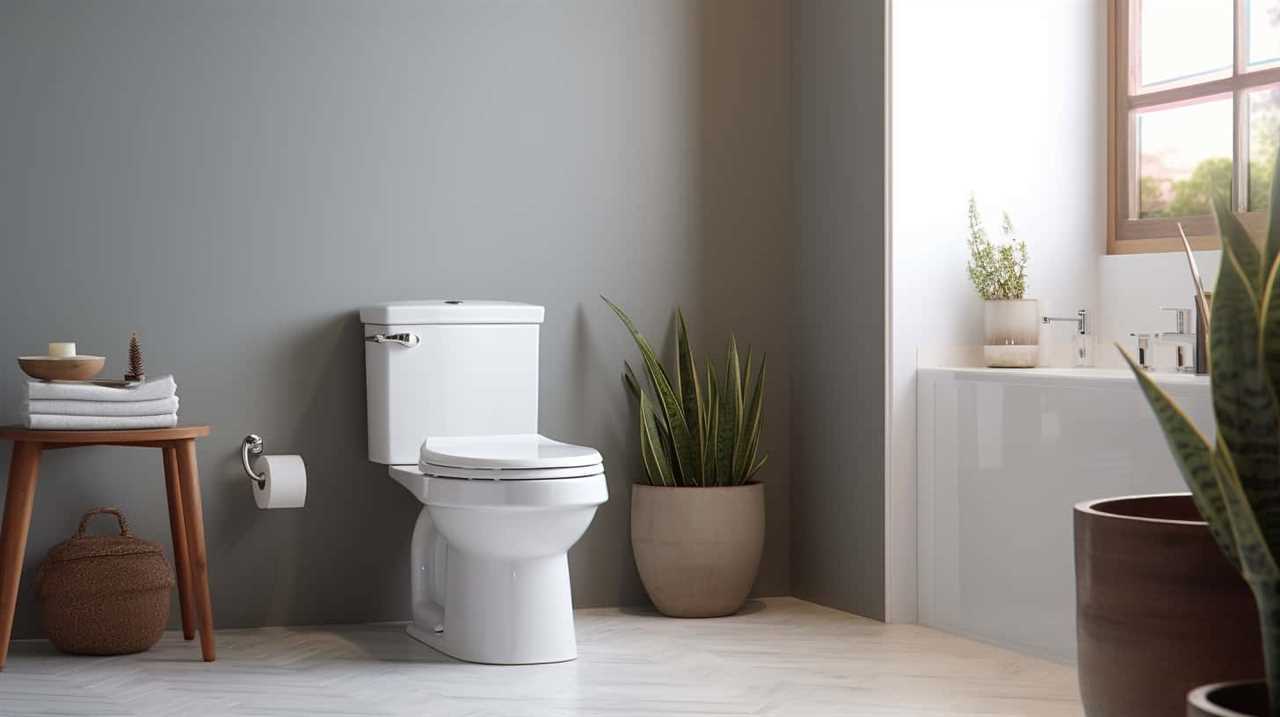
Expensive Plumbing Repairs
We can avoid expensive plumbing repairs by being mindful of what we flush down the toilet. Flushing items that aren’t designed to be flushed, such as wipes, can lead to clogging and blockages in our pipes. These clogs can cause significant damage to our plumbing system, resulting in expensive consequences.
When wipes are flushed, they can get caught in the pipes, creating a blockage that prevents proper water flow. Over time, the accumulation of these non-biodegradable materials can lead to extensive pipe damage, requiring costly repairs.
Not only does flushing wipes have expensive consequences, but it also poses environmental harm. These wipes don’t break down easily and can contribute to sewage backups and overflows, contaminating our waterways. Therefore, it’s crucial to be aware of the potential expensive repairs and environmental impact of flushing non-flushable items like wipes.
In the subsequent section, we’ll delve into the environmental impact of flushing and explore how it affects our ecosystems and water sources.
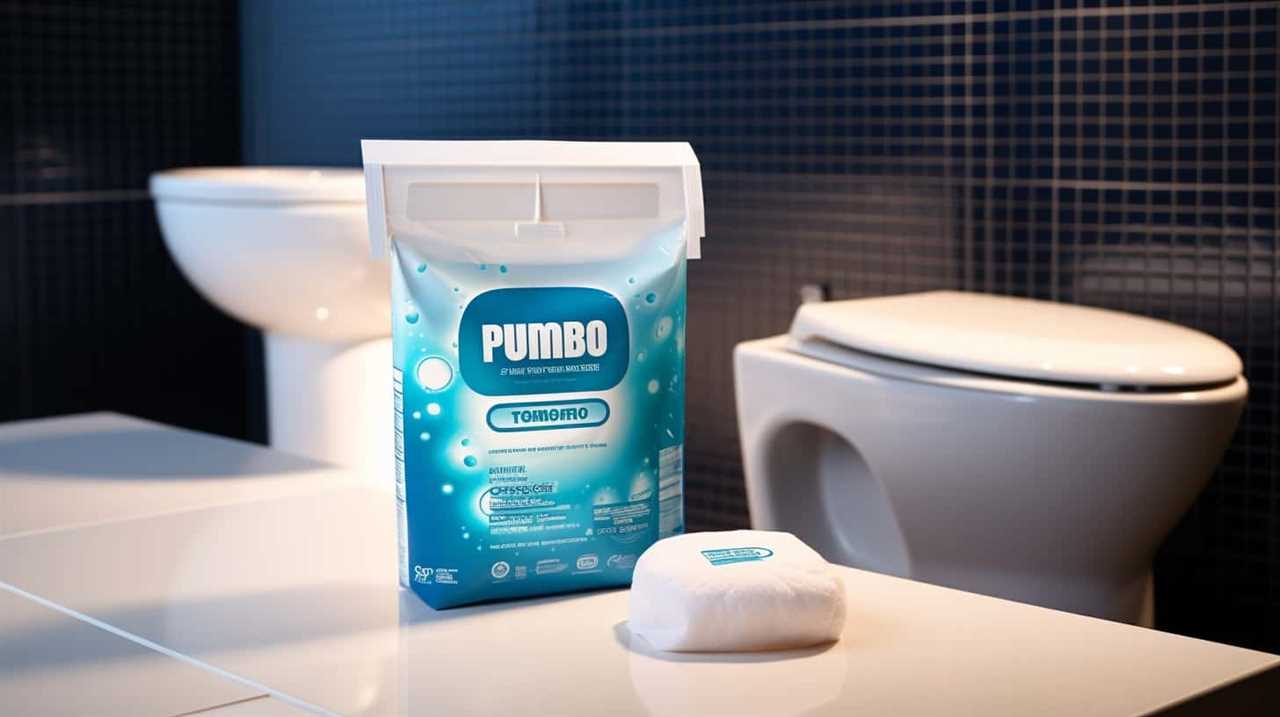
Environmental Impact of Flushing
Flushing wipes can lead to clogging and blockages in pipes, causing significant damage to our plumbing system. This not only results in costly repairs but also has a detrimental impact on sewage systems and the environment. When wipes are flushed down the toilet, they do not break down like toilet paper. Instead, they accumulate and form clumps that can obstruct the pipes, leading to blockages. These blockages can cause sewage backups, resulting in unpleasant odors, unsanitary conditions, and potential contamination of nearby water sources. To emphasize the impact of flushing wipes, consider the following table:
| Impact on Sewage Systems | Environmental Contamination |
|---|---|
| Clogging and blockages | Sewage backups |
| Costly repairs | Unpleasant odors |
| Disruption of services | Contamination of water sources |
The improper disposal of wipes through flushing not only poses a risk to our plumbing infrastructure but also contributes to environmental pollution and potential health hazards. As we delve deeper into the consequences of flushing wipes, it’s important to understand the potential damage they can cause to septic systems.
Potential Damage to Septic Systems
When flushing a Lysol wipe, it can cause potential damage to septic systems. Septic tank issues can arise from the improper disposal of wipes, leading to costly repairs and disruptions in the functioning of the system.
To better understand the potential damage, here are three key points to consider:

- Clogging: Lysol wipes aren’t designed to break down easily in water, which can lead to clogs in the septic system. These clogs can obstruct the flow of wastewater, leading to backups and potential damage to the pipes and septic tank.
- Reduced Efficiency: The presence of non-biodegradable wipes can disrupt the natural breakdown of waste in the septic tank. This can cause a buildup of solids and reduce the overall efficiency of the system, requiring more frequent septic system maintenance.
- System Failure: In severe cases, the accumulation of wipes can cause the septic system to fail completely. This can result in sewage backups, foul odors, and the need for extensive repairs or even replacement of the entire system.
Considering the potential damage to septic systems, it’s crucial to properly dispose of wipes in the trash rather than flushing them. This not only helps to avoid septic tank issues but also prevents further environmental consequences of flushing wipes.
Environmental Consequences of Flushing Wipes
As we continue discussing the potential damage to septic systems, it is important to address the compound preposition ‘in terms of’ and highlight the environmental consequences of flushing wipes. Flushing wipes can have severe environmental impacts, including clogging prevention in wastewater systems and raising environmental awareness about the need for proper disposal methods. When wipes are flushed down the toilet, they can accumulate in pipes and cause blockages, leading to costly repairs and potential sewage overflows. To emphasize the importance of proper disposal, let’s take a look at the table below:
| Environmental Consequences of Flushing Wipes |
|---|
| Clogging Prevention |
| Increased pressure on wastewater treatment |
| Reduced water flow |
| Potential for sewage spills |
| Risk of polluting water resources |
These consequences serve as a reminder of the need to dispose of wipes in the trash bin rather than flushing them. In the subsequent section, we will delve into the issue of microplastics and water pollution caused by flushing wipes.
Microplastics and Water Pollution
To further understand the environmental consequences of flushing wipes, let’s now delve into the issue of microplastics and water pollution caused by this improper disposal method. Flushing wipes introduces microplastics into the water supply, which can have detrimental effects on both the environment and human health. Here are three key points to consider:

- Microplastics in drinking water: Flushing wipes releases tiny plastic particles into the wastewater system, which ultimately make their way into rivers, lakes, and oceans. These microplastics can then contaminate drinking water sources, posing a risk to human consumption.
- Health risks of microplastics: Research suggests that microplastics can have negative impacts on human health. These particles may contain harmful chemicals that can be absorbed by the body, potentially leading to various health issues such as inflammation, oxidative stress, and even organ damage.
- Environmental implications: Microplastics not only pose risks to human health but also disrupt ecosystems. Marine life can mistake microplastics for food, leading to ingestion and bioaccumulation of toxins up the food chain. This can have severe consequences for the overall balance and health of aquatic ecosystems.
It is crucial to understand the potential dangers of flushing wipes and take appropriate measures to dispose of them properly, in order to mitigate the risks of microplastics and water pollution.
Risks to Aquatic Life
When considering the risks to aquatic life associated with flushing Lysol wipes, it’s crucial to examine the potential impacts on marine pollution, ecosystem disturbance, and long-term consequences.
The presence of Lysol wipes in aquatic environments can contribute to the pollution of our oceans, rivers, and lakes, affecting the delicate balance of marine ecosystems.
Furthermore, the disturbance caused by these wipes can disrupt the natural habitats of aquatic organisms, leading to adverse effects on their survival and reproduction.

Ultimately, the long-term consequences of flushing Lysol wipes can pose a significant threat to the health and sustainability of aquatic life.
Marine Pollution Impacts
We are aware of the potential risks to aquatic life when flushing a Lysol wipe. The marine pollution caused by these wipes can have detrimental effects on marine biodiversity and water contamination. Here are three key impacts to consider:
- Harm to Marine Organisms: Lysol wipes contain chemicals that are toxic to aquatic life. When flushed, these chemicals leach into the water, affecting fish, crustaceans, and other marine organisms. They can disrupt their reproductive cycles, impair their immune systems, and even lead to death.
- Disruption of Ecosystem Functions: Marine biodiversity plays a crucial role in maintaining ecosystem balance. When aquatic life is harmed, it can lead to a ripple effect throughout the food chain, affecting other species and ecosystem functions. This disruption can have far-reaching consequences for the overall health of the marine ecosystem.
- Water Contamination: Flushing Lysol wipes introduces harmful chemicals into water bodies, contributing to water contamination. These chemicals can persist in the environment for a long time, posing a risk to not only aquatic life but also to humans who rely on these water sources for drinking, fishing, and recreational activities.
Understanding these impacts highlights the urgent need to address the proper disposal of Lysol wipes and prevent their entry into our waterways. Moving forward, we’ll explore the ecosystem disturbance effects caused by this form of pollution.
Ecosystem Disturbance Effects
Let’s explore the potential risks to aquatic life caused by flushing a Lysol wipe and the resulting ecosystem disturbance effects. Flushing Lysol wipes can have detrimental effects on aquatic ecosystems, as the chemicals present in these wipes can contaminate water bodies and disrupt the delicate balance of marine life. Aquatic organisms, such as fish, amphibians, and invertebrates, can be directly affected by the toxic substances released from the wipes. These chemicals can impair their reproductive capabilities, damage their respiratory systems, and even lead to death. Additionally, the accumulation of non-biodegradable materials, like wipes, can contribute to the decline of ecosystem resilience by hindering the natural flow and functioning of the ecosystem. To mitigate these risks, proper waste management strategies should be implemented to ensure that Lysol wipes and other similar products are disposed of in an environmentally responsible manner.
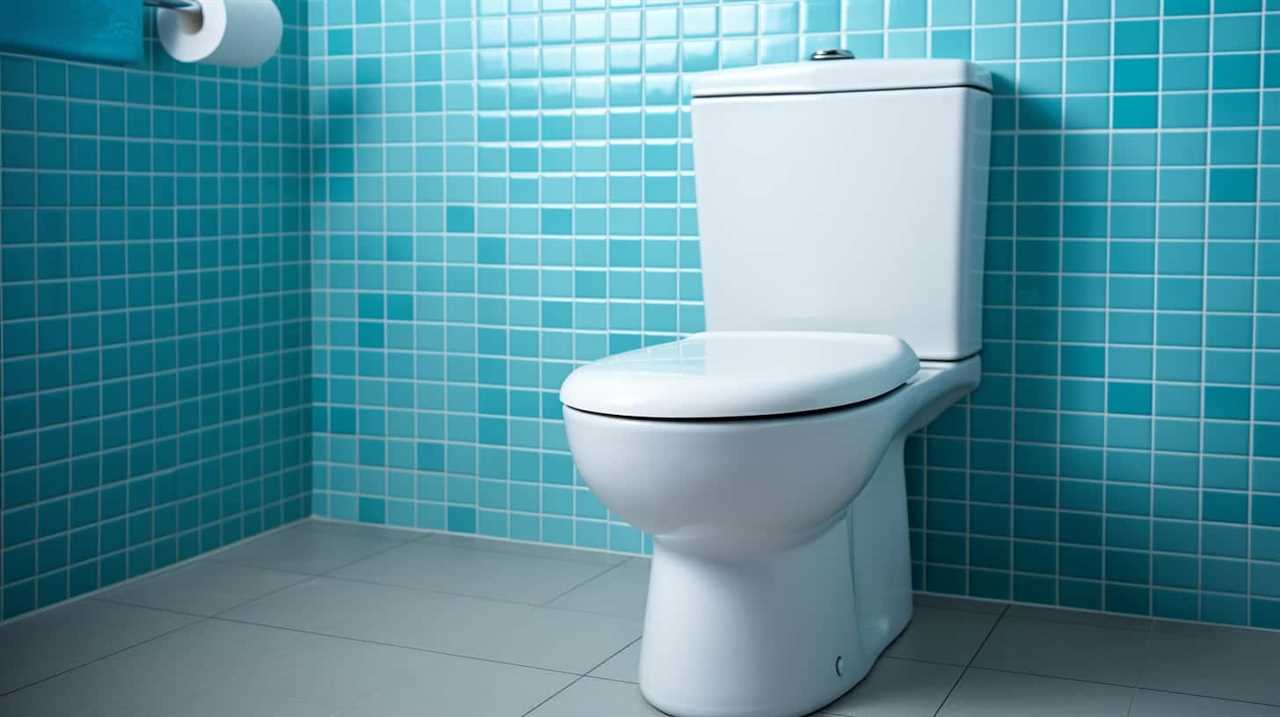
| Potential Risks to Aquatic Life | Ecosystem Disturbance Effects |
|---|---|
| Contamination of water bodies | Impaired reproductive capabilities |
| Disruption of marine life balance | Damage to respiratory systems |
| Direct negative impact on fish, amphibians, and invertebrates | Decline in ecosystem resilience |
| Possible death of aquatic organisms | Hindrance of ecosystem functioning |
| Accumulation of non-biodegradable materials |
Long-Term Aquatic Consequences
As we delve into the long-term aquatic consequences of flushing a Lysol wipe, it becomes evident that the risks to aquatic life persist far beyond the initial act of disposal. The impact on marine ecosystems can be severe and have long-lasting effects. Here are the three main long-term environmental consequences:
- Water Contamination: When Lysol wipes are flushed, they release chemicals into the water that can contaminate the aquatic environment. These chemicals can be toxic to marine organisms, leading to disruptions in their growth, reproduction, and overall health.
- Habitat Destruction: Lysol wipes that end up in water bodies can accumulate and form clumps, creating blockages in streams, rivers, and other waterways. This can lead to habitat destruction for various aquatic species, disrupting the natural balance of the ecosystem.
- Bioaccumulation: The chemicals present in Lysol wipes can bioaccumulate in the tissues of aquatic organisms over time. As smaller organisms are consumed by larger ones, these chemicals can biomagnify, reaching higher concentrations in the food chain. This poses a significant threat to higher-level predators, including fish and marine mammals.
Understanding these long-term consequences highlights the importance of proper disposal methods to protect our precious marine ecosystems.
Legal Implications of Improper Disposal
Improperly disposing of a Lysol wipe can have legal implications. As responsible citizens, it’s our civic duty to ensure the proper disposal of waste products, including disinfecting wipes. When we fail to do so, we may face legal consequences for our actions.
Disposing of Lysol wipes in an incorrect manner, such as flushing them down the toilet, can lead to clogged pipes and sewage backups. In many jurisdictions, this is considered a violation of local ordinances and may result in fines or penalties.
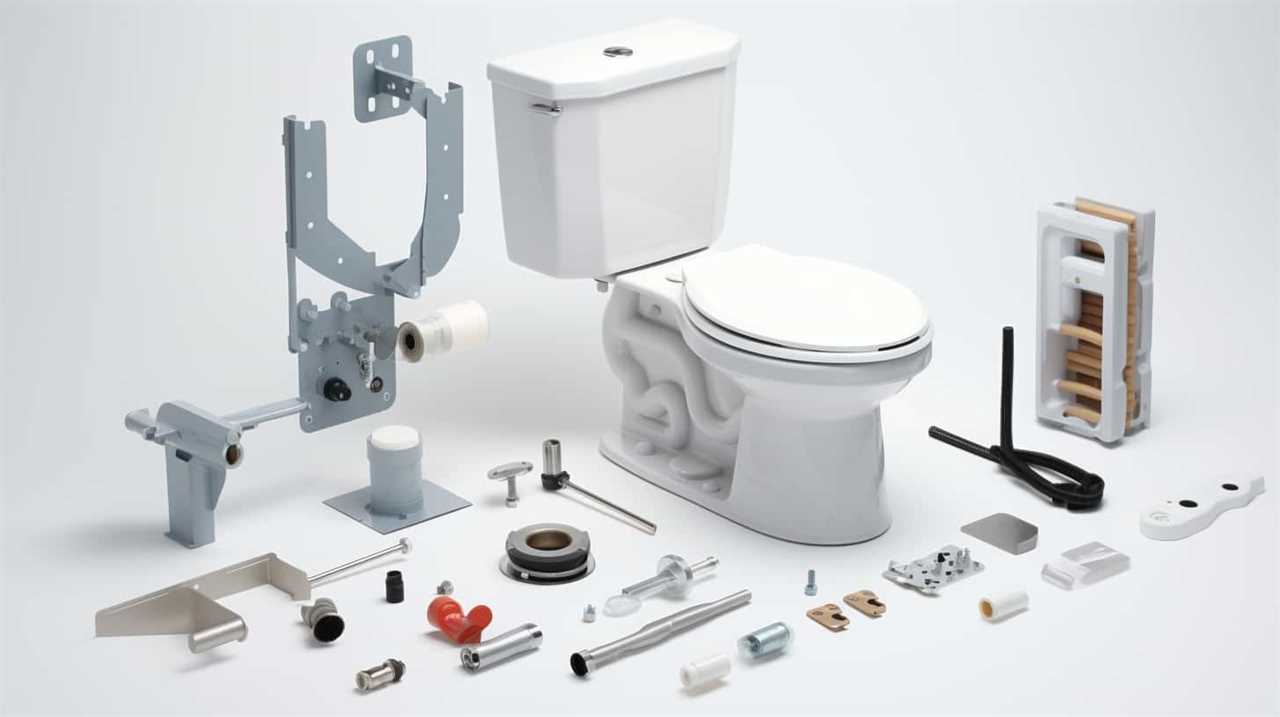
Additionally, improper disposal can harm the environment, polluting water sources and endangering wildlife.
To avoid legal trouble and fulfill our civic responsibilities, it’s crucial to dispose of Lysol wipes in designated trash bins or follow the guidelines provided by local waste management authorities.
Alternatives to Flushing Lysol Wipes
When it comes to safely disposing of Lysol wipes, there are a few alternatives to flushing them down the toilet.
One option is to throw them in the trash, making sure to seal them in a plastic bag to prevent any leakage.

Another eco-friendly option is to use biodegradable wipes that can be composted, reducing environmental impact.
Safer Disposal Methods
For a safer alternative to flushing Lysol wipes, we should consider disposing of them in a designated trash receptacle. Flushing wipes, including Lysol wipes, can have detrimental effects on our environment.
Here are three safer disposal options to consider:
- Separate and Bag: After using a Lysol wipe, separate it from other trash and place it in a plastic bag. This prevents any potential contamination and reduces the risk of accidental exposure.
- Double-Bagging: To further seal in any potential pathogens, consider double-bagging the used Lysol wipes. This additional layer of protection ensures that the wipes are contained and won’t cause any harm.
- Proper Disposal: Dispose of the double-bagged Lysol wipes in a designated trash receptacle. This ensures that they’re handled and disposed of in a controlled and safe manner, minimizing any potential environmental impact.
Eco-Friendly Wipe Options
To continue our discussion on safer disposal methods, let’s explore eco-friendly wipe options as alternatives to flushing Lysol wipes.
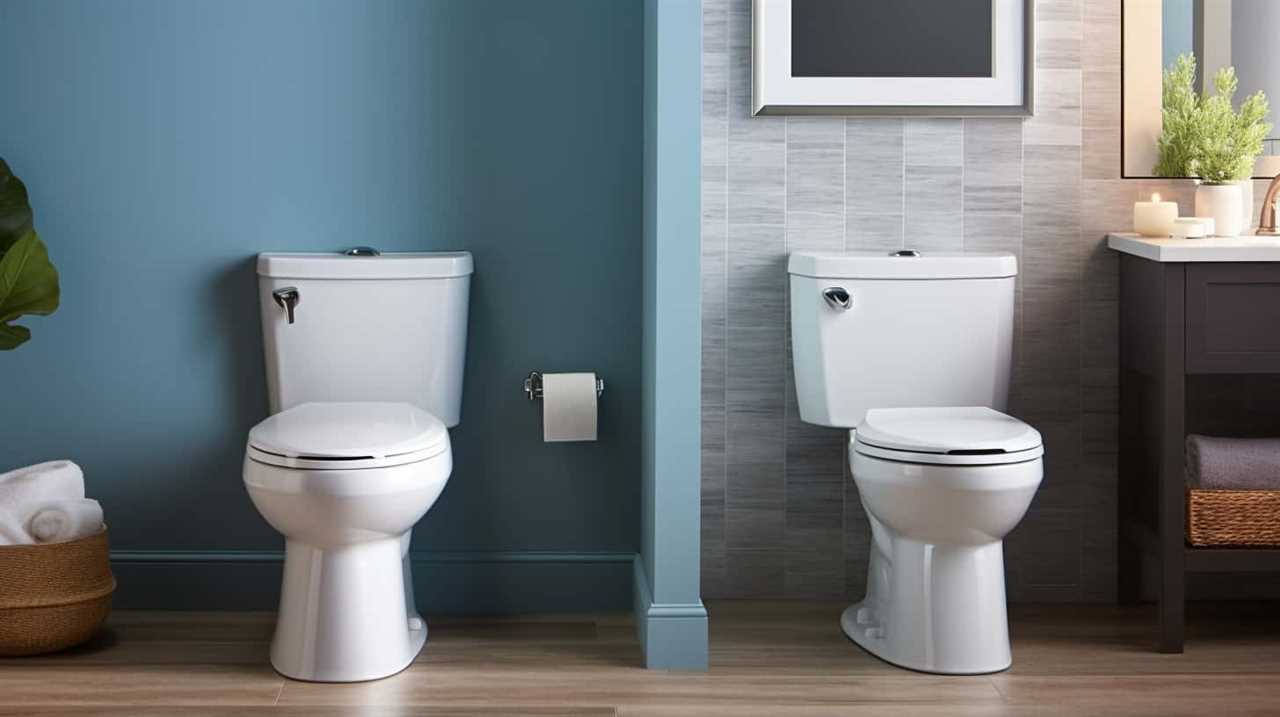
When it comes to choosing eco-friendly wipe brands, there are several options available in the market. These wipes are specifically designed to be biodegradable, meaning they can break down naturally over time, reducing their impact on the environment.
One of the benefits of using biodegradable wipes is that they can be safely disposed of in regular trash bins, eliminating the need for flushing. Additionally, these wipes are often made from sustainable materials and are free from harsh chemicals, making them a safer choice for both the environment and our health.
Some popular eco-friendly wipe brands include Seventh Generation, Honest Company, and Babyganics. By opting for these biodegradable alternatives, we can contribute to a cleaner and greener future.
Proper Disposal Methods for Wipes
We can dispose of wipes properly by using designated disposal bins. Proper waste management is crucial for environmental responsibility. Here are three key steps to ensure the correct disposal of wipes:

- Look for designated disposal bins: Many public places, such as restrooms, hospitals, and airports, have designated bins specifically for the disposal of wipes. These bins are equipped to handle and contain the waste safely.
- Don’t flush wipes: Flushing wipes down the toilet can cause blockages in sewer systems, leading to costly repairs and environmental damage. It’s important to educate ourselves and others about the risks associated with flushing wipes.
- Seal the wipes in a bag: If there are no designated bins available, seal the used wipes in a plastic bag before disposing of them in regular trash bins. This helps contain any potential contamination and prevents the spread of germs.
Importance of Following Manufacturer Instructions
Proper adherence to manufacturer instructions is paramount in ensuring the effective and safe use of Lysol wipes. The importance of product safety can’t be overstated, especially when it comes to cleaning products. Manufacturers spend significant time and resources conducting research and testing to determine the correct usage and disposal methods for their products.
By understanding and following these recommendations, users can optimize the performance of Lysol wipes while minimizing any potential risks. Manufacturer instructions provide crucial information on the appropriate surfaces for use, contact time, and precautions to be taken. They also outline specific instructions on how to safely dispose of the wipes after use.
Neglecting to follow these guidelines can lead to ineffective cleaning, damage to surfaces, or even potential harm to individuals. Therefore, it’s essential to prioritize understanding and adhering to manufacturer recommendations to ensure the desired outcomes while maintaining safety.
Educating Others on Proper Disposal Practices
While it’s important to properly dispose of Lysol wipes, flushing them down the toilet can have serious consequences. To educate others on proper disposal practices, we need to emphasize the alternatives to landfill and the composting options available. Here are three key points to consider:

- Recycling: Lysol wipes packaging can often be recycled. Encourage others to check their local recycling guidelines to ensure proper disposal.
- Trash Bin: If recycling isn’t an option, advise others to dispose of used Lysol wipes in a sealed plastic bag and place them in the trash bin. This prevents them from ending up in waterways or clogging sewer systems.
- Composting: Some Lysol wipes are made from biodegradable materials, making them suitable for composting. Inform others about the composting options in their area and encourage them to use this eco-friendly method.
By educating others on these alternatives, we can help reduce the environmental impact of Lysol wipes while promoting responsible waste management practices.
In the next section, we’ll conclude this discussion by emphasizing the importance of thinking before flushing.
Conclusion: Think Before You Flush
To wrap up our discussion on proper disposal practices for Lysol wipes, let’s take a moment to consider the potential consequences of flushing them down the toilet.
While it may seem convenient to dispose of wipes this way, it’s important to understand the potential health risks and environmental impact. Flushing Lysol wipes can lead to clogged pipes and sewer backups, resulting in costly repairs and disruptions to the sewage system.
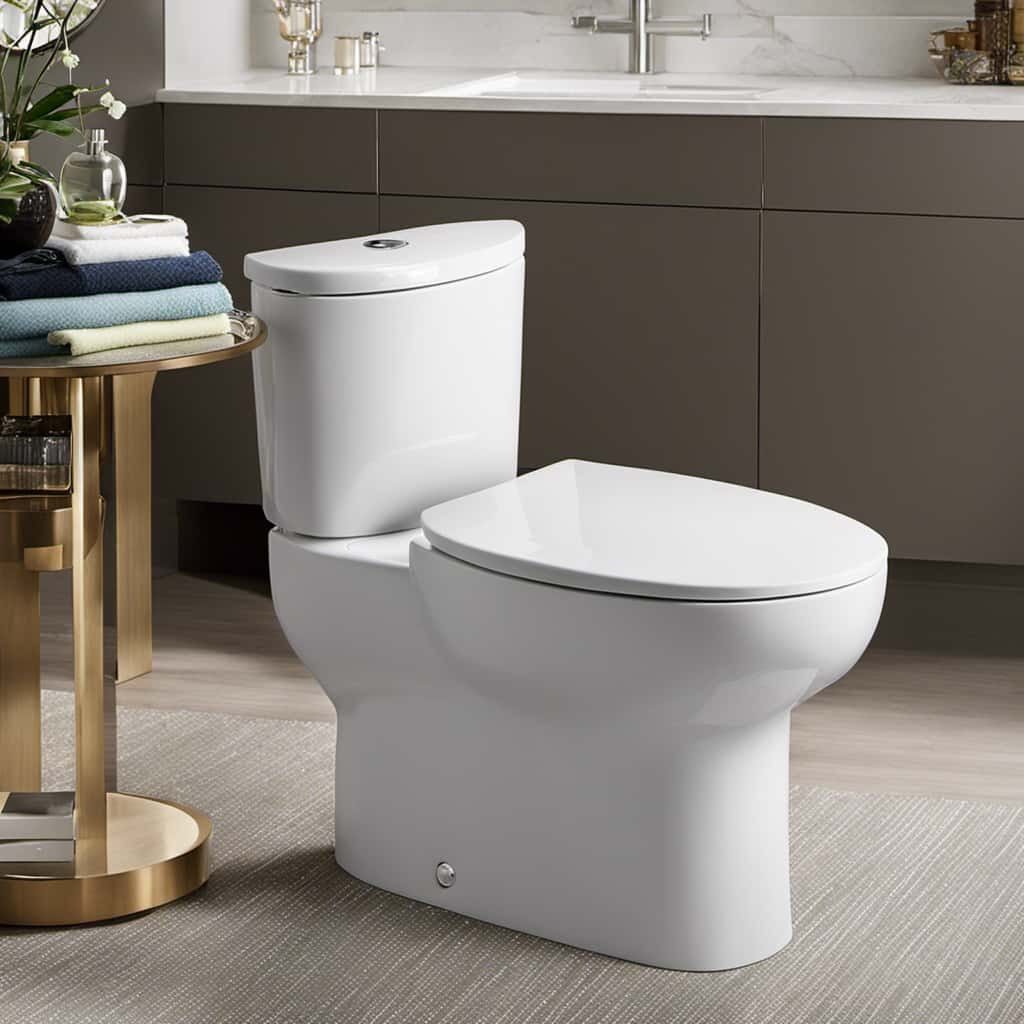
Moreover, these wipes can contain chemicals that are harmful to aquatic life and can contaminate water sources.
Safer disposal options include throwing used wipes in the trash, placing them in sealed plastic bags, or utilizing composting facilities if available.
Conclusion
In conclusion, it’s crucial to think before flushing Lysol wipes.
The potential plumbing problems, damage to wastewater treatment systems, clogging in pipes, and harm to septic systems make proper disposal methods imperative.
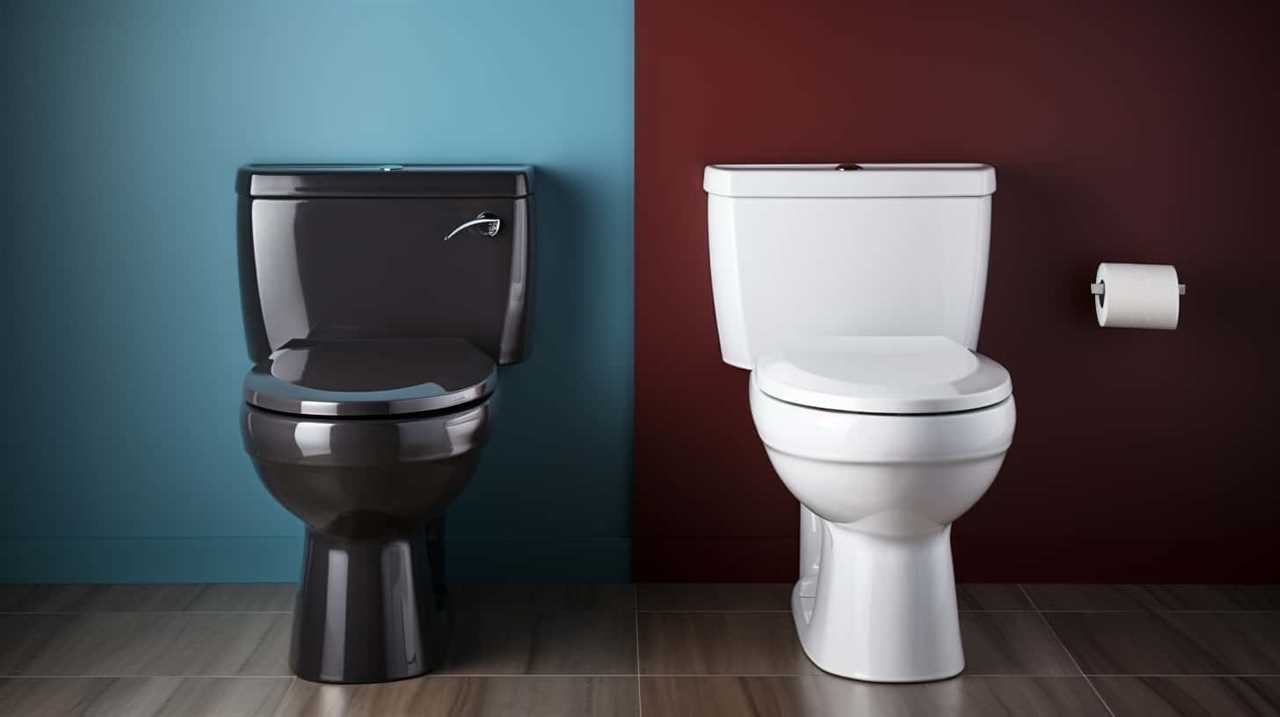
Following the manufacturer’s instructions and educating others on proper disposal practices are essential.
Let’s remember that responsible and informed actions can prevent unnecessary damage and ensure the smooth functioning of our plumbing and sanitation systems.




